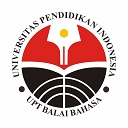The Use of Japanese Personal Pronoun based on Gender in “Narcissu” by Tomo Kataoka
Abstract
This article discussed the difference of Japanese pronouns based on gender from literature point of view. The database of this study was a novel entitled “Narcissu” by Japanese author Tomo Kataoka. The research method used in this research was descriptive method. In analysing the novel, author used the morphology theories by Harumi Tanaka (1982). The findings of this study showed that the use of personal pronoun including first-person pronouns, second-person pronouns, and third-person pronouns in the novel were influenced greatly by gender. The difference in using these personal pronouns were caused by the difference in man and woman’s perception. Based on the data, there were tendency that the speakers choose the best word to utter to their interlocutor based on their own perspective, influenced by the situation and the context. The findings of this study was expected to help foreign language learners to understand better about the use of Japanese personal pronoun based on gender, mainly in conversation.
Keywords
Full Text:
PDF (IDN)References
Alwi, H., Soenjono, D., Lapoliwa, H., & Moeliono, A. M. (2010). Tata Bahasa Baku Bahasa Indonesia. Jakarta: Balai Pustaka.
Artika, I. W. (2015). Teori dalam Pengajaran Sastra. Prasi: Jurnal Bahasa, Seni dan Pengajarannya, 10(19), 18-27. hhttp://dx.doi.org/10.23887/prasi.v10i19.8850
Hermawan, N., & Rosliana, L. (2013). Pronomina Persona dalam Novel Naifu dan Terjemahannya dalam Bahasa Indonesia. Japanese Literature, 2(3), 1-11. Retrieved from eJournal Undip.
Kataoka, T. (2008). Narcissu. Tokyo: Kadokawa Corporation.
Kataoka, T. (2015). Narcissu. (D. Agung, Trans.). Jakarta: PT Eaststar Adhi Citra.
Kridalaksana, H. (1992). Pembentukan Kata dalam Bahasa Indonesia. Jakarta: PT Gramedia Pustaka Utama.
Rini, E. I. H. A. N. (2018). Konjungsi Baai dalam Kalimat Bahasa Jepang. Kiryoku: Jurnal Studi Kejepangan, 2(1), 33-40. https://doi.org/10.14710/kiryoku.v2i1.33-40
Sudjianto, S., & Dahidi, A. (2012). Pengantar Linguistik Bahasa Jepang. Jakarta: Kesaint Blanc Publishing.
Tanaka, H. (1982). Gengogaku Enshuu. Tokyo: Taishukan Shoten.
Yuana, C. (2018). Perbedaan Ichininsho Daimeishi menurut Gender. Parafrase: Jurnal Kajian Kebahasaan & Kesastraan, 18(2), 7-18. https://doi.org/10.30996/parafrase.v18i2.1717
DOI: https://doi.org/10.17509/japanedu.v5i1.22036
Refbacks
- There are currently no refbacks.
Copyright (c) 2020 JAPANEDU: Jurnal Pendidikan dan Pengajaran Bahasa Jepang

This work is licensed under a Creative Commons Attribution-ShareAlike 4.0 International License.
 Published by:
Published by: Department of Japanese Language Education, Faculty of Language and Literature Education
Universitas Pendidikan Indonesia
 Online ISSN: Online ISSN:2528-5548 |

JAPANEDU: Jurnal Pendidikan dan Pengajaran Bahasa Jepang (e-ISSN:2528-5548) lisenced under a Creative Commons Attribution-ShareAlike 4.0 Internasional (CC BY-SA 4.0)


